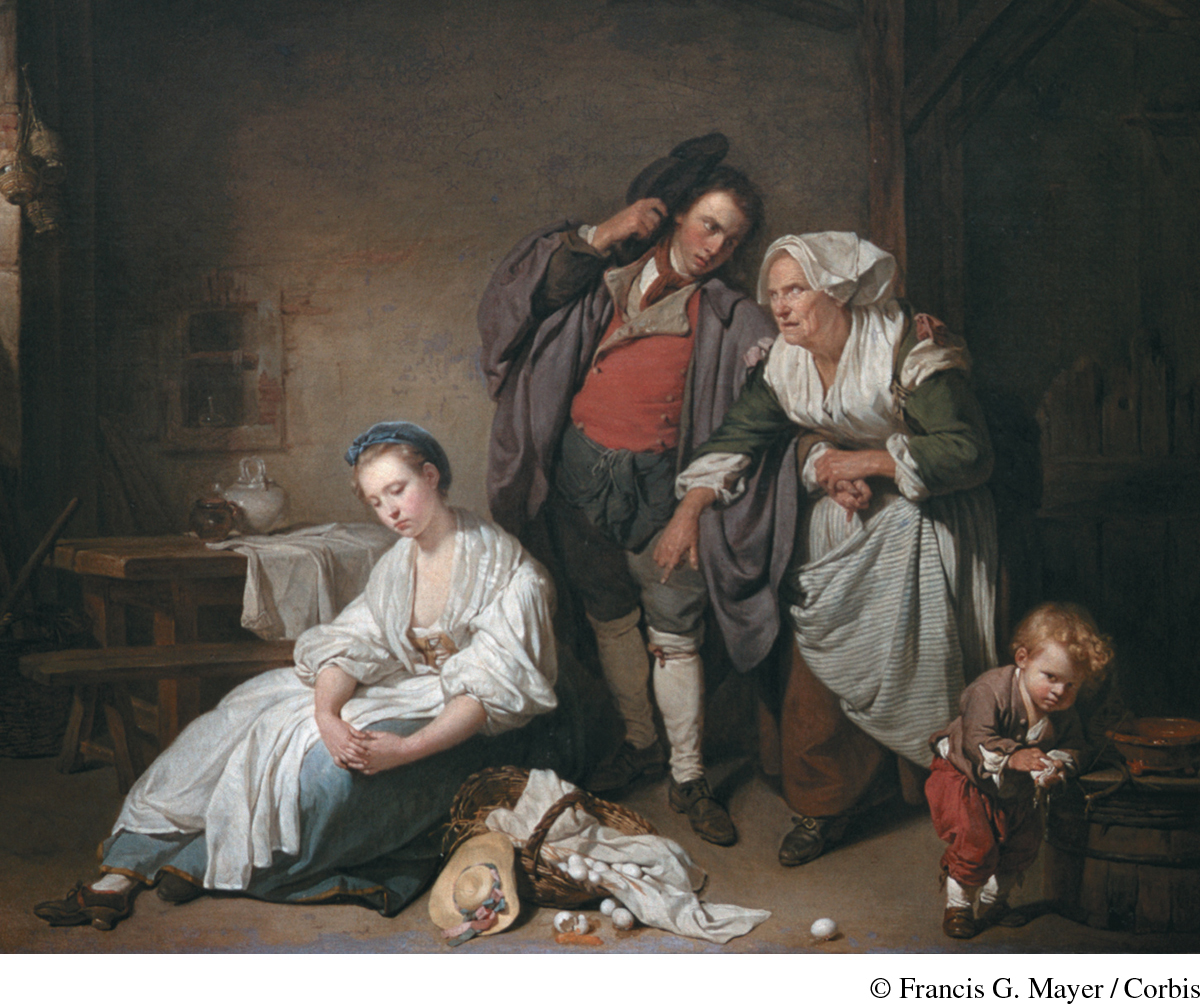Life on the Margins
Printed Page 590
Important EventsLife on the Margins
Booming foreign trade fueled a dramatic economic expansion—French colonial trade increased tenfold in the 1700s—but the results did not necessarily trickle all the way down the social scale. The population of Europe grew by nearly 30 percent. Even though food production increased, shortages and crises still occurred periodically. Prices went up in many countries after the 1730s and continued to rise gradually until the early nineteenth century; wages in many trades rose as well, but less quickly than prices. Some people prospered, but those at the bottom of the social ladder—day laborers in the cities and peasants with small holdings—lived on the edge of dire poverty, and when they lost their land or work, they either migrated to the cities or wandered the roads in search of food and work. In France alone, 200,000 workers left their homes every year in search of seasonal employment elsewhere. At least 10 percent of Europe’s urban population depended on some form of charity.
The growing numbers of poor people overwhelmed local governments. In some countries, beggars and vagabonds had been locked up in workhouses since the mid-1600s. The expenses for running these overcrowded institutions increased by 60 percent in England between 1760 and 1785. After 1740, most German towns created workhouses that were part workshop, part hospital, and part prison. Such institutions also appeared for the first time in Boston, New York, and Philadelphia. The French government created dépôts de mendicité (“beggar houses”) in 1767. The government sent people to these new workhouses to labor in manufacturing, but most were too weak or sick to work, and 20 percent of them died within a few months of incarceration.
Those who were able to work or keep their land fared better: an increase in literacy, especially in the cities, allowed some lower-class people to participate in new tastes and ideas. One French observer insisted, “These days, you see a waiting-maid in her backroom, a lackey in an ante-room reading pamphlets. People can read in almost all classes of society.” In France, only 50 percent of men and 27 percent of women could read and write in the 1780s, but that was twice the rate of a century earlier. Literacy rates were higher in England and the Dutch Republic, much lower in eastern Europe.
Whereas the new elite might attend salons, concerts, or art exhibitions, peasants enjoyed their traditional forms of popular entertainment, such as fairs and festivals, and the urban lower classes relaxed in cabarets and taverns. Sometimes pleasures were cruel to animals. In Britain, bullbaiting, bearbaiting, dogfighting, and cockfighting were all common forms of entertainment that provided opportunities for organized gambling.
As population increased and villagers began to move to cities to better their prospects, the rates of births out of wedlock soared, from less than 5 percent of all births in the seventeenth century to nearly 20 percent at the end of the eighteenth. Some detect in this change a sign of sexual liberation and the beginnings of a modern sexual revolution: as women moved out of the control of their families, they began to seek their own sexual fulfillment. Others view this change more bleakly, as a story of seduction and betrayal: family and community pressure had once forced a man to marry a woman pregnant with his child, but now a man could abandon a pregnant lover by simply moving away.
Women who came to the city as domestic servants had little recourse against masters or fellow servants who seduced or raped them. The result was a startling rise in abandoned babies. Most European cities established foundling hospitals in the 1700s, but infant and child mortality was 50 percent higher in such institutions than for children brought up at home.

European states had long tried to regulate sexual behavior; every country had laws against prostitution, adultery, fornication, sodomy, and infanticide. Reformers criticized the harshness of laws against infanticide, but they showed no mercy for “sodomites” (as male homosexuals were called), who in some places, in particular the Dutch Republic, were systematically persecuted and imprisoned or even executed. Male homosexuals attracted the attention of authorities because they had begun to develop networks and special meeting places. The stereotype of the effeminate, exclusively homosexual male seems to have appeared for the first time in the eighteenth century, perhaps as part of a growing emphasis on separate roles for men and women.
The Enlightenment’s emphasis on reason, self-control, and childhood innocence made parents increasingly anxious about their children’s sexuality. Moralists and physicians wrote books about the evils of masturbation, “proving” that it led to physical and mental degeneration and even madness.
REVIEW QUESTION What were the major differences in the impact of the Enlightenment on the nobility, the middle classes, and the lower classes?
While the Enlightenment thus encouraged excessive concern about children being left to their own devices, it nevertheless taught the middle and upper classes to value their children and to expect their improvement through education. Writers such as de Genlis and Rousseau drew attention to children, who were no longer viewed only as little sinners in need of harsh discipline. Toys, jigsaw puzzles, and clothing designed for children all appeared for the first time in the 1700s. Children were no longer considered miniature adults.